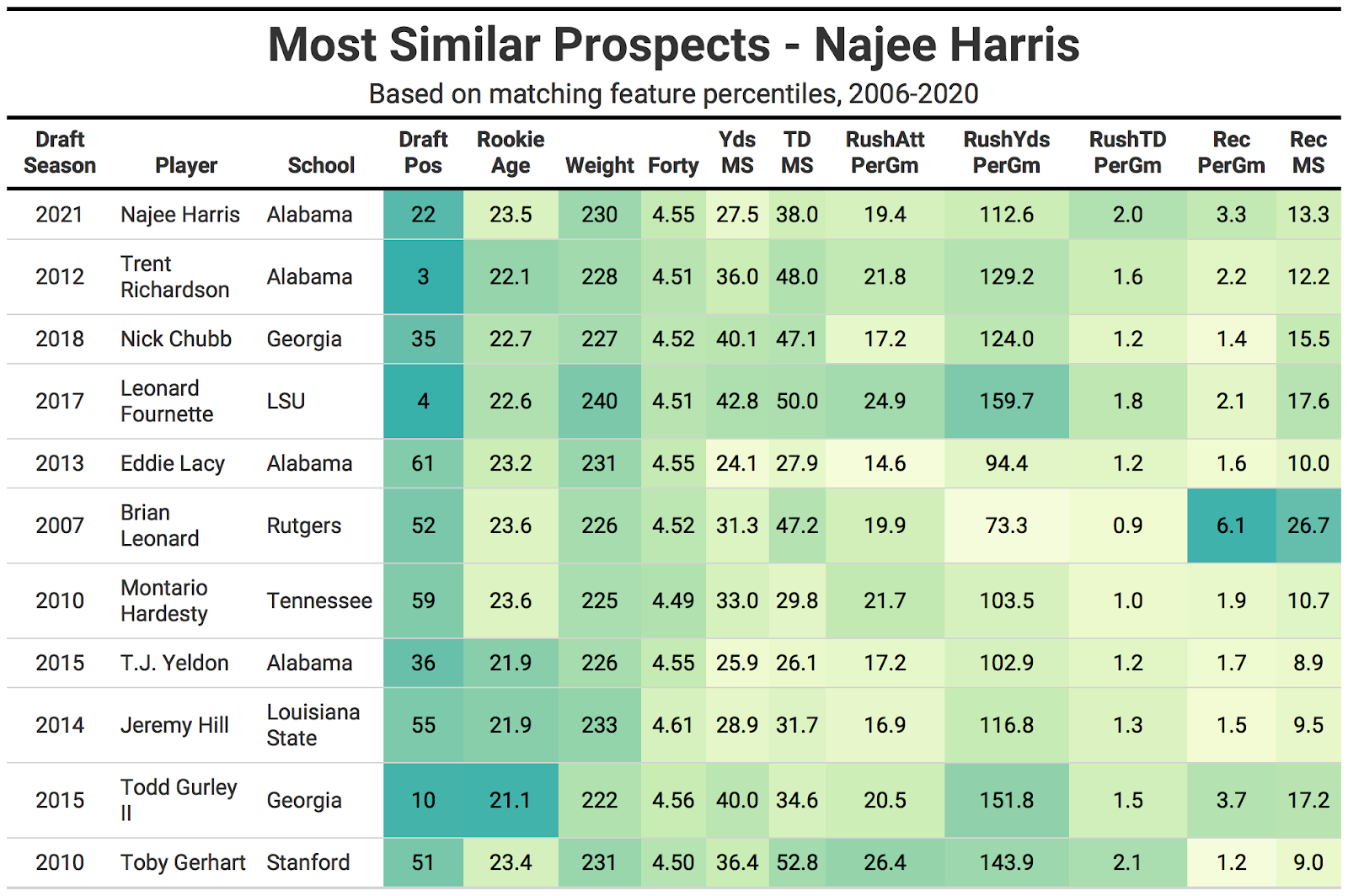Comparing current NFL draft prospects to those of years past is standard procedure in draft evaluation, though most comparisons are built on the memory recall and subjective opinion of the particular evaluator.
This will be the first in a series of articles comparing the 2021 draft prospects to prior years and picking out the most similar comps with a clearly delineated and quantifiable method.
PFF data scientist Eric Eager has done tremendous work building college-to-pro projections, which are built off the robust college data we’ve collected since 2014 and have been applied to exercises like building an “Analytics” Mock. In this analysis, I will use some of our advanced stats for comparison but primarily rely on traditional stats to go back further to compare the 2021 prospects to draft classes going back to 2006.
Without the NFL Scouting Combine this season, the important measurables like weight and 40-yard dash will be reported through the various pro days.
View PFF's 2021 NFL Draft position rankings:
QB | RB | WR | TE | T | iOL | DI | EDGE | LB | CB | S
METHODOLOGY
The comps below were derived from a two-step process. First, I converted all the most statistically relevant stats and measurables to percentiles based on the thousands of prospects who have entered the NFL since 2006 at each position. Then, I filtered the total universe of past prospects by those who had draft positions, weight and 40 times within a 10th percentile in either direction of Alabama RB Najee Harris. For undrafted players, I assigned a numerical draft position of 300.
The rest of the matching features were transformed by principal component analysis (PCA). I found the closest statistically comparable players by the euclidean distance between the players' principle components, listed in the top 10 below.
The metrics for PCA are: rushing attempts per game, rushing yards per game, rushing touchdowns per game, receptions per game and market share of team receptions. All of these data points come from the prospect’s best collegiate season. I also matched the prospect’s market share of total team yards and touchdowns to past draft prospects.
For Harris' draft position, I’m using an estimate based on the mock data collected at GrindingTheMocks.com. For the weight and 40 time, I’m using the numbers from his pro day, with a 0.03-second penalty added to the 40 time to reflect the uncertainty of pro-day timed measurements.
Most comparable players
Harris has the complete profile that teams are looking for in a first-round running back. He was involved in the rushing and passing games for a top-notch program and displayed the burst and receiving skills modern offenses covet.
Buddy Johnson vs. Najee Harris on a wheel route. pic.twitter.com/FAlzrVZzPU
— Joe Rowles (@JoRo_NFL) April 9, 2021
Despite his large frame, the Alabama product displayed fleet footwork that rivals that of much smaller backs.
Najee Harris footwork is impeccable. The most elusive RB in the class just so happens to weigh 230lbs – sick wit it. 🔥🔥🔥 #NFLDraft2021 https://t.co/60qNBursmB
— Ray G (@RayGQue) April 14, 2021
Harris’ projection as a late first-round running back means his comps are composed of players drafted anywhere from third overall to the late second round.

His top comps all had that rare combination of size and receiving stats, with the top seven all accounting for at least 10% of team receptions in their best season.
Harris is significantly older than many of his comps, as he declared for the NFL draft after his true senior season at 23 years of age. Age isn’t a huge factor in running back prospect evaluation, and Harris isn’t exactly a late breakout, given his stellar pedigree that goes back to his college recruitment as the No. 11 overall high-school prospect in the 2017 ESPN 300.




 © 2024 PFF - all rights reserved.
© 2024 PFF - all rights reserved.